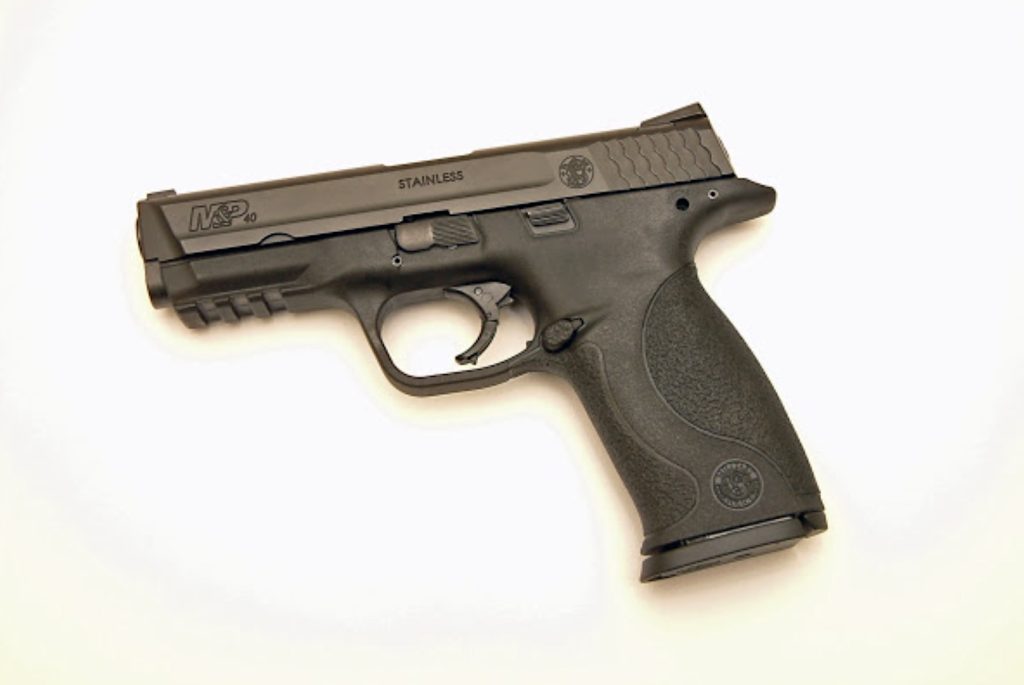
Just over 18 years ago, I joined a number of writers on a trip to the Smith & Wesson factory for the introduction of a new law enforcement pistol. The first of a line of newly manufactured “Military & Police” branded handguns, it was a striker-fired semi-auto chambered for the .40 S&W cartridge.
Why the .40? At the time, it was the preeminent service cartridge in American law enforcement. Not only that, it made little sense to design a gun around the 9x19mm round, then use the same platform for the larger (and, at the time, more popular) .40 S&W. They Thought it made more sense to build the gun around the snappier, bigger round, then go down caliber to the smaller 9mm service round.

The handgun project team at the time settled on areas of pistol design that were most criticized at the time. First was “feel” or “pointability.” People seemed more interested in feel than fit and the design team used the 1911-esque 18° grip angle.
Next there was the whole “pull the trigger to disassemble” thing. While it’s a non-issue to most gun people, for police administrators and purchasers it was a potential pitfall. Accidents had happened with other guns through no fault of the gun’s design, but due to a failure to unload and, in some cases, by pointing the gun in an unsafe direction.
To address this, a tool was designed for field stripping. It attached positively to the gun, yet is easily removed. A thin punch-type affair, the tool is placed inside the open ejection port to push down the striker deactivation lever.
The action obviously has to be open when this is done, positively preventing a chambered round from being contacted by the firing pin. This also forces the operator’s attention to the chamber and magazine well of the pistol, further helping to ensure the empty condition of the pistol.
With the pressure off, a take-down lever on the side of the frame is turned and the slide is removed from the receiver. After cleaning and reassembly, the striker deactivation lever is reset by seating an unloaded magazine.
Simple enough…and appealing to bureaucrats.
The barrel outside diameter is wider at the muzzle than it is along its length back toward the chamber. This helps the muzzle mate up with the front of the slide and reduces slide friction as the slide retracts during use.
An interesting design twist is the “rocker-“style frame rails. As you look down on the field stripped M&P, the rails appear to be oval, a football shape. It looks similarly round when viewed from the side. The shape forces the slide to travel without binding as the designer wanted it to move.
Wear is confined to the outside of the ‘bulge.’ This rail system has less bearing surface, meaning less friction. Dirt and sludge would be moved out during hard use operation, making this a reliable as well as durable system.


It had been many years since I shot this early-issue M&P40. Recently, I’ve seen some of these hit the market, having formerly been issued by police agencies and replaced for newer guns. I thought shooting this through a state qual course on a target smaller than used in the official quals — FPS-1 target, printed from the First Person Safety website – would be a good exercise. I used some old stock Winchester White Box 180 grain FMJ flat-point (flattened hardball).
The holster is an older Blade-Tech Kydex rig, picked up during another S&W event, this one at Gunsite. The SG Timer (obtained from MDT last year) was used to time my progress (or lack thereof).
I found that I lost some time, likely in dealing with 40-caliber recoil as well as relative lack of familiarity with the M&P40. As noted, I haven’t shot it in some time and I have far more rounds through Smith Shields than the larger M&Ps.
Still, the accuracy was more than enough to clean the course on the mandated FBI Q-target, even with a hit low off the page from 25 yards. That was a convulsive clutch as I fired the gun trying to make the time. I went overtime on both strings from ten yards, but didn’t allow any rounds to wander off the shaded part of the target until I was at fifteen yards. It was still in the target outline.
That left 32 hits in the shaded “cardiac” box on the target. With the eight hits in the less shaded area of the target, that’s 80% to pass – if I used the target scoring.
This gun’s better than that. It was clearly my shooting. As usual, the M&P40 functioned without problems. If you run across one of these in your store’s used gun case, it wouldn’t be a bad choice at all.
